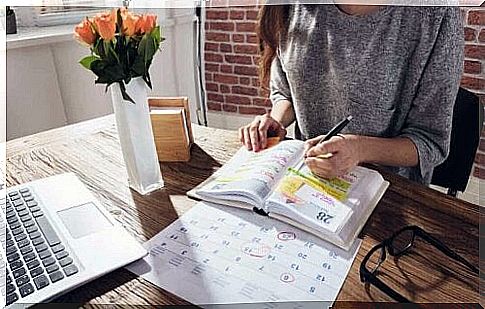8 Common Interior Design Mistakes
Knowing what to do is not enough to be a great decorator. Sometimes it’s more important to know what to avoid. Discover the most common mistakes!

Sometimes you buy things for the house that later do not match. Therefore, we will tell you 8 interior decorating mistakes that are frequently made so that you can avoid or correct them.
We all want a beautiful home that makes us feel comfortable and reflects our style. Although personal taste and comfort should prevail in the decoration of every family or person, there are some basic rules that offer a guide to making spaces harmonious and pleasant.
Sometimes small changes are enough to make a space completely different.
Common mistakes in interior design
The house reflects your personality and your tastes. It is the place where privacy and intimacy take place. You want to feel comfortable there.
However, even if you do your best, often times you don’t get the home you want, and you don’t understand where you’re falling. Take note of the most common interior decorating mistakes.
1. Not planning the decoration
When you are thinking of moving or renovating the decoration of a house, it is very important to have a roadmap that allows you to establish a style and assess the characteristics of the place. While often the budget is not enough to hire a professional interior designer, adequacy of spaces is not a task to be taken lightly.
If you take interior design lightly you will end up with a number of items that often don’t match with each other or with the location. This leads to frustration and dissatisfaction.
However, if you make a plan with a budget, a style inspiration process, and study the basics of interior design, the end result will be better.

2. Neglecting the lighting
Lighting is one of the main factors in interior design. Indeed, it is one of the starting points to define how a space will be adapted. The most common mistake is having bad lighting.
However, the space can also be overlit, highlighting less flattering areas of the house or combining bulbs of different shades.
The lighting system is essential for spaces and for tasks that require visual activity. This is expressed in the “Practical Lighting Manual” of Ediciones UC. In general, you should start by evaluating the general lighting of the space to determine how much is needed.
Then you can bring more light to the spaces you want to showcase or to those that need it as a working or reading space. In addition, it is necessary to evaluate the shadows that the light sources will generate. For example, in a bathroom it is inconvenient to have ceiling lights, as they create shadows on the face.
3. Ignore the proportions
Not maintaining the correct scales and proportions in a space is often a common mistake by those who are not design professionals, as it can be a complex subject. Putting a lot of large objects in a room will make it look small. On the contrary, filling a space with small objects will make it cluttered and full.
The key to solving this problem is to achieve a balance in the environment. For such harmony to exist, there must be a mixture of different sizes and shapes. If you have a large house, not everything you buy has to be large. The same goes if you have a small apartment.
4. Do not choose a center of interest
According to Julio Madrigal’s “Practical Guide to Interior Design and Design”, each room has a point that is more interesting. It is usual that the main activity of the room takes place there. For example, in a dining room, the center of interest is given by the table with its chairs.
When you are not thinking about this center of interest, the larger object, such as a sofa or a bed, usually attracts attention. And if this object has been overlooked, it is counterproductive.
Therefore, it is important to choose a focal point in each room and to decide where you want to intentionally attract attention. A work of art is a good option.
5. Block spaces
Placing items in such a way that they facilitate circulation is the key to achieving a good interior design. Having furniture that gets in the way of movement is one of the most common home decorating mistakes and the easiest to correct.
To correct this error, you can draw a plan of the space and plan different locations. Then you choose the one that eases traffic the most.
6. Surplus furniture and accessories
In many homes, too much furniture and accessories are kept over time. Saving family heirlooms can get awkward when you don’t know how to arrange them and they become a meaningless accumulation.
In interior design, it is essential to evaluate objects according to their contribution to space, utility or aesthetics.
Even in a kitsch decoration , characterized by a flowery style, the elements should retain a style and have a decorative intention. If you want to have a house with a beautiful design, leave nothing to chance. Evaluate which furniture and accessories you no longer like or add nothing to.
7. Few furniture and accessories
Although minimalism is a trend characterized by the use of few resources to adapt spaces, one of its tenets indicates that objects are functional. If you don’t have furniture and accessories that fulfill specific organizational functions, you risk missing your effect.
When there is not enough furniture and accessories, uncomfortable situations arise, such as not having where to put keys and coats when you get home. These situations completely spoil the style of the house because they create a mess. It is better to apply the popular saying “everything out of place”.
8. Follow fashions without thinking
One of the most common mistakes is trying to stick with the latest trends and listen to all the opinions of others without wondering what you like the most. The famous Spanish interior designer Sussana Cots has emphasized in various interviews the importance of emotional interior design, that is, the therapeutic influence of the design of spaces.
This designer points out that there are certain types of elements in interior design that influence the mood, such as smell, color, distribution and light. Many of these aspects are linked to the personality.
Therefore, you should base the decoration on your feelings and comfort. Only adopt the trends that appeal to you.

What can you do ?
Knowing the things you shouldn’t do is a starting point for understanding what works in interior design. The most important thing is to feel comfortable and in harmony with the decoration and style of the house.
However, here are some key points you can take advantage of:
- Look for inspiration on social media, the internet and magazines. In the decoration sections, you will find the best tips, tricks and trends.
- Take advantage of the natural light. Give natural light the chance to illuminate your home, especially work areas.
- Buy quality things. If you are thinking about investing in new items for your home, it is better to buy quality items.
- Donate what you don’t use. For this you can use the technique of the famous Marie Kondo, give what does not generate emotion or does not perform a function.
Dare to experiment!
After learning about the most common interior decorating mistakes, you can start by evaluating how your own spaces are. Achieving a great location is often accompanied by a process of trial and error.
Try to be flexible and allow yourself the flexibility to make changes. Also, if you have the opportunity to get professional advice, it will be a worthwhile investment.









